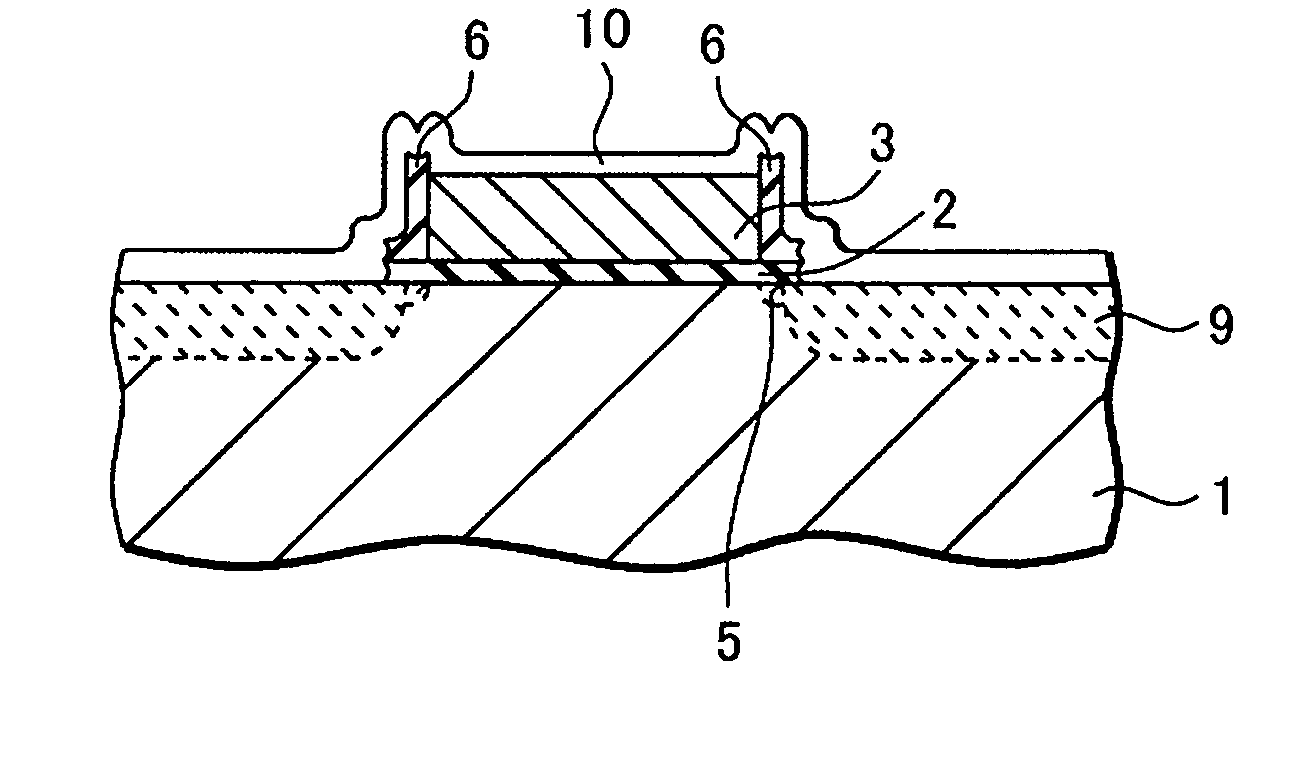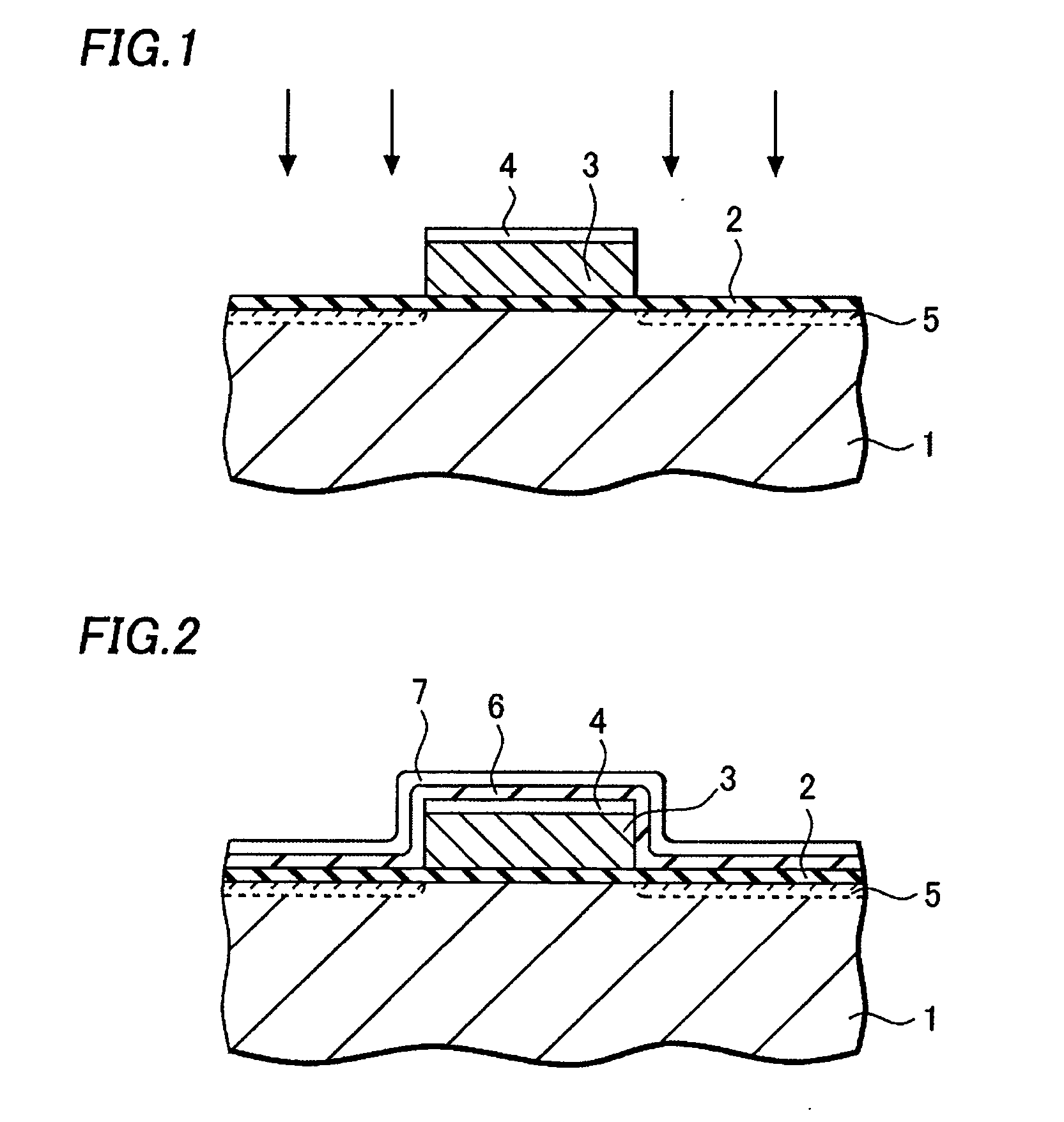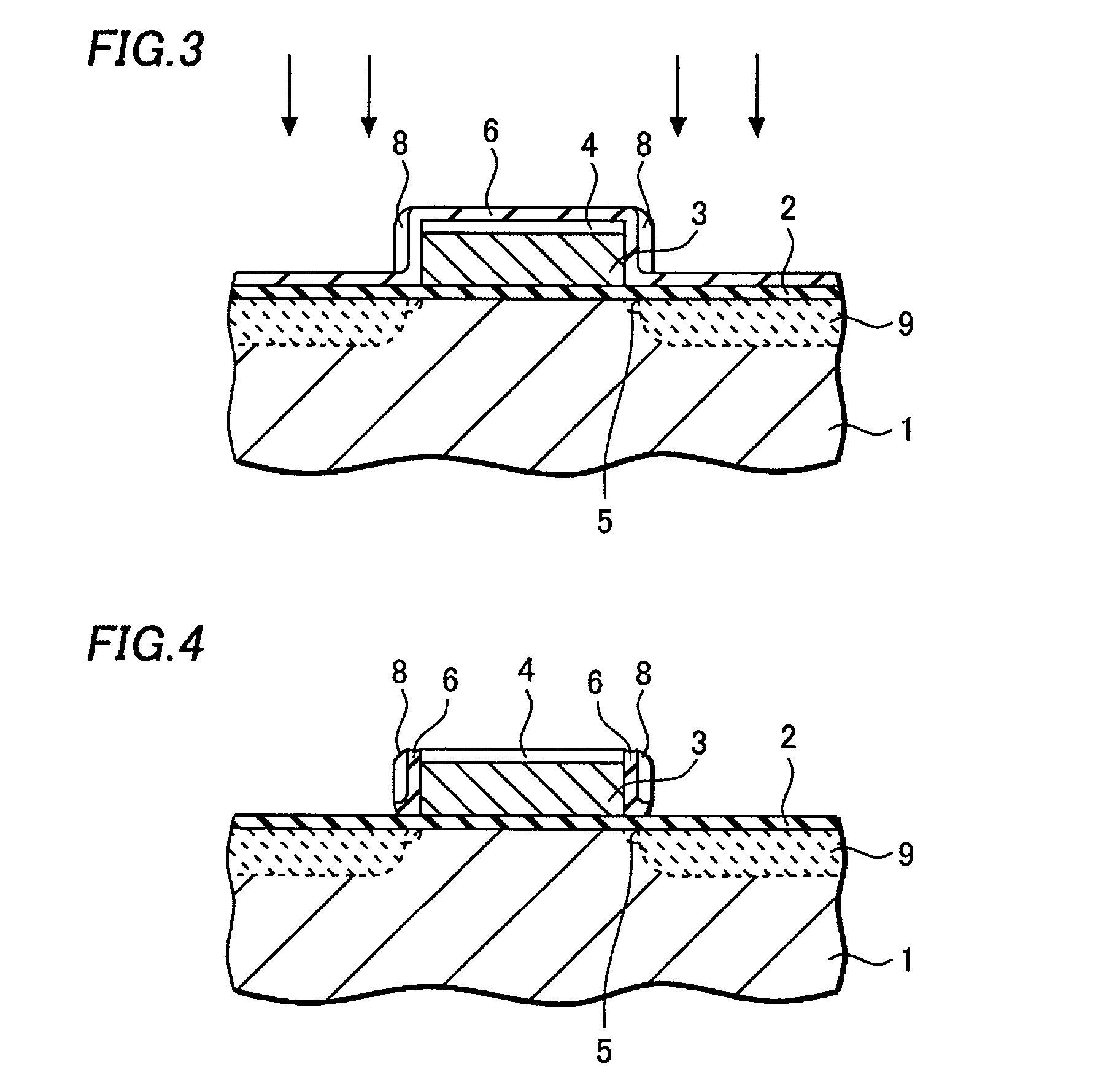Manufacturing method of semiconductor device
a manufacturing method and semiconductor technology, applied in the direction of semiconductor devices, electrical appliances, transistors, etc., can solve the problems of affecting the reaction between the transition metal and silicon, and affecting the performance of the mos transistor
- Summary
- Abstract
- Description
- Claims
- Application Information
AI Technical Summary
Benefits of technology
Problems solved by technology
Method used
Image
Examples
Embodiment Construction
[0037] A method of manufacturing a semiconductor device according to an embodiment of this invention will be described hereafter, referring to FIGS. 1-7.
[0038] A silicon oxide film of about 5 nm in thickness is formed on a silicon substrate 1 by thermal oxidation, as shown in FIG. 1. It becomes a gate insulation film 2. And a polysilicon film of about 200 nm in thickness and an insulation film such as a silicon oxide film are formed on the gate insulation film 2. A gate electrode 3 made of the polysilicon film and the insulation film 4 stacked on it is formed by shaping the films by photolithography and etching.
[0039] After that, a low dose of impurity ions, e.g. phosphorus ions, are injected into the silicon substrate 1 using the gate electrode as a mask. In this process, about 1-5×1014 (ions / cm2) of phosphorus ions are injected into surface regions of the silicon substrate 1 about 10 nm deep from the surface of the silicon substrate 1. Subsequent heat treatment such as N2 (nitro...
PUM
| Property | Measurement | Unit |
|---|---|---|
| thickness | aaaaa | aaaaa |
| thicknesses | aaaaa | aaaaa |
| thicknesses | aaaaa | aaaaa |
Abstract
Description
Claims
Application Information
 Login to View More
Login to View More - R&D Engineer
- R&D Manager
- IP Professional
- Industry Leading Data Capabilities
- Powerful AI technology
- Patent DNA Extraction
Browse by: Latest US Patents, China's latest patents, Technical Efficacy Thesaurus, Application Domain, Technology Topic, Popular Technical Reports.
© 2024 PatSnap. All rights reserved.Legal|Privacy policy|Modern Slavery Act Transparency Statement|Sitemap|About US| Contact US: help@patsnap.com










